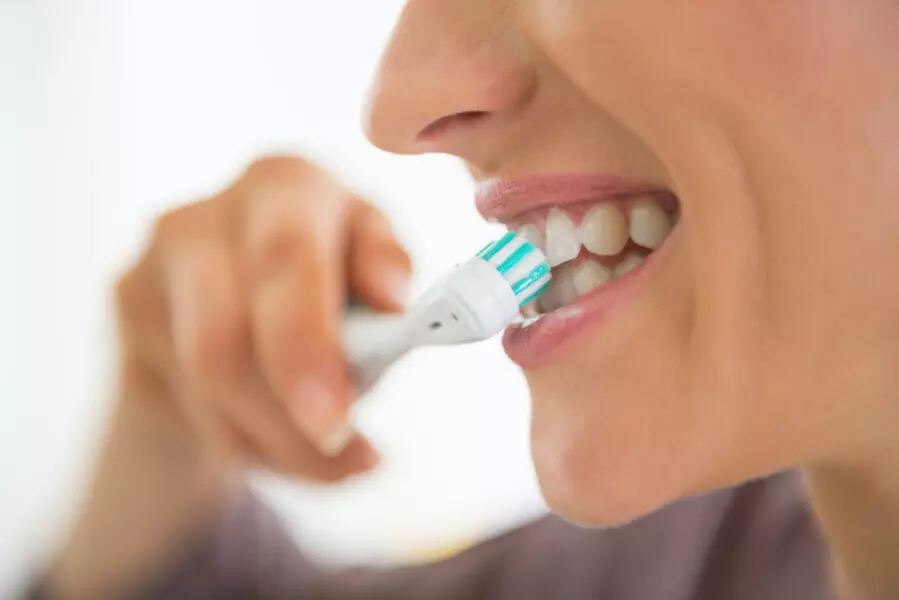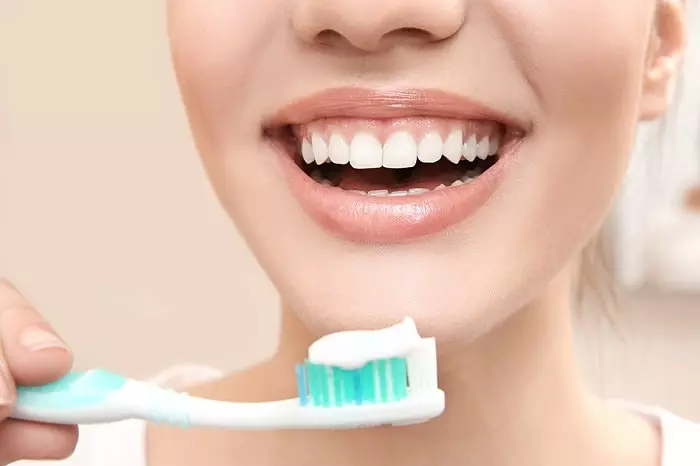Brushing techniques and tips : Brushing your teeth is an essential part of maintaining good oral hygiene and preventing dental problems such as cavities, gum disease, and bad breath. Here are some brushing techniques and tips to help ensure that you’re effectively cleaning your teeth:
- Use the right toothbrush: Choose a toothbrush with soft, rounded bristles that can easily reach all surfaces of your teeth. Electric toothbrushes can also be effective, as they can provide a more thorough cleaning.
- Brush twice a day: Brush your teeth at least twice a day, ideally after meals or snacks. Brushing before bed is especially important, as it helps remove plaque and bacteria that can accumulate during the night.
- Brush for two minutes: Brush your teeth for at least two minutes each time you brush. This ensures that you’re giving your teeth a thorough cleaning.
- Use the proper technique: Hold your toothbrush at a 45-degree angle to your teeth and brush in a circular motion, using gentle pressure. Be sure to brush the front, back, and tops of your teeth, as well as your tongue and the roof of your mouth.
- Don’t forget to floss: Flossing is an important part of oral hygiene, as it helps remove food particles and bacteria from between your teeth. Aim to floss at least once a day.
- Replace your toothbrush regularly: Replace your toothbrush every three to four months, or sooner if the bristles become frayed or worn.7. Don’t brush too hard: Brushing too hard can actually damage your teeth and gums, so be gentle and use a light touch.
- Use fluoride toothpaste: Fluoride is a mineral that helps strengthen tooth enamel and prevent cavities. Look for toothpaste that contains fluoride.
- Rinse your mouth after brushing: After brushing, rinse your mouth with water to help remove any remaining toothpaste and debris.
- Visit your dentist regularly: Even with proper brushing and flossing, it’s still important to visit your dentist regularly for checkups and cleanings. Your dentist can help spot and treat any dental problems before they become more serious.
By following these brushing techniques and tips, you can help keep your teeth and gums healthy and strong.
Table of Contents
Brushing techniques
Brushing techniques refer to the specific methods and movements used to effectively clean your teeth with a toothbrush. The goal of brushing techniques is to remove plaque, bacteria, and food particles from all surfaces of your teeth, including the front, back, and tops of your teeth, as well as your tongue and the roof of your mouth.
Brushing techniques and tips
Some common brushing techniques include:
- The circular technique: This involves holding your toothbrush at a 45-degree angle to your teeth and brushing in a circular motion, using gentle pressure. Be sure to brush all surfaces of your teeth, including the front, back, and tops of your teeth, as well as your tongue and the roof of your mouth.
- The back-and-forth technique: This involves holding your toothbrush at a 90-degree angle to your teeth and brushing back and forth in short strokes. Be sure to brush all surfaces of your teeth, including the front, back, and tops of your teeth, as well as your tongue and the roof of your mouth.
- The up-and-down technique: This involves holding your toothbrush vertically and brushing up and down on the inside surfaces of your front teeth. Be sure to brush all surfaces of your teeth, including the front, back, and tops of your teeth, as well as your tongue and the roof of your mouth.
- The sweeping technique: This involves sweeping your toothbrush from the gum line down to the edge of your teeth, using a gentle flicking motion. Be sure to brush all surfaces of your teeth, including the front, back, and tops of your teeth, as well as your tongue and the roof of your mouth. Brushing techniques and tips
It’s important to use a gentle touch and not brush too hard, as this can damage your teeth and gums. Additionally, it’s important to brush for at least two minutes each time you brush to ensure that you’re giving your teeth a thorough cleaning.
Your dentist or dental hygienist can provide guidance on the best brushing technique for your specific dental needs.

Use the right toothbrush
Using the right toothbrush is an important part of effective brushing. Here are some tips for choosing the right toothbrush: Brushing techniques and tips
- Choose a toothbrush with soft bristles: Soft bristles are gentle on your teeth and gums and are less likely to cause damage. Hard bristles can actually damage your tooth enamel and irritate your gums.
- Look for a toothbrush with a small head: A toothbrush with a small head can more easily reach all surfaces of your teeth, including hard-to-reach areas at the back of your mouth.
- Consider an electric toothbrush: Electric toothbrushes can be more effective at removing plaque and bacteria, especially for people who have difficulty using a manual toothbrush. Some electric toothbrushes also have timers to ensure that you’re brushing for the recommended two minutes.
- Choose a toothbrush with a comfortable handle: A toothbrush with a comfortable handle can make brushing more pleasant and help you maintain a good grip on the toothbrush.
- Replace your toothbrush regularly: No matter what type of toothbrush you choose, it’s important to replace it regularly. Over time, the bristles can become frayed and less effective at cleaning your teeth. Aim to replace your toothbrush every three to four months, or sooner if the bristles become worn or splayed.
By choosing the right toothbrush and replacing it regularly, you can ensure that you’re effectively cleaning your teeth and maintaining good oral hygiene.

Brush twice a day
Brushing your teeth at least twice a day is an important part of maintaining good oral hygiene. Here are some tips for brushing your teeth effectively: Brushing techniques and tips
- Brush for at least two minutes: Brushing for at least two minutes each time you brush is important to ensure that you’re giving your teeth a thorough cleaning.
- Brush after meals: Brushing after meals can help remove food particles and bacteria from your teeth and prevent plaque buildup.
- Use a fluoride toothpaste: Fluoride is a mineral that helps strengthen tooth enamel and prevent cavities. Look for toothpaste that contains fluoride.
- Be gentle: Brushing too hard can actually damage your teeth and gums. Use a gentle touch and don’t apply too much pressure when brushing.
- Brush all surfaces of your teeth: Be sure to brush the front, back, and tops of your teeth, as well as your tongue and the roof of your mouth.
- Don’t forget to floss: Flossing is an important part of oral hygiene, as it helps remove food particles and bacteria from between your teeth.
- Rinse your mouth after brushing: After brushing, rinse your mouth with water to help remove any remaining toothpaste and debris.
By brushing your teeth at least twice a day and following these tips, you can help keep your teeth and gums healthy and strong.












